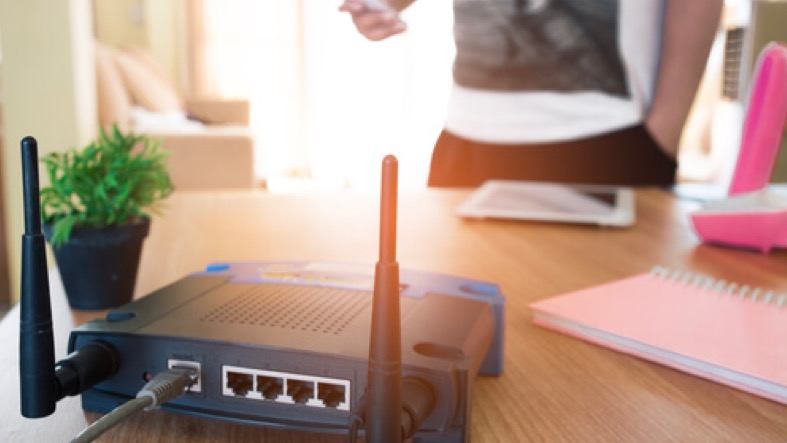So, you’ve decided you want satellite internet, but, what’s next? Do you install your own equipment? What do you have to buy? Here’s a guide on how to set up a whole home network on satellite internet for a less-stress installation process. Get connected with ease.
Who is satellite internet for?
Satellite internet is available nationwide, so it’s enticing for customers living in rural areas and hard to reach locations. Satellite providers, such as Starlink, HughesNet and Viasat, offer wireless satellite internet everywhere coast-to-coast.
Home network setup
Setting up a home network doesn’t have to be daunting. Follow these steps:
Schedule your installation: Contact your satellite internet provider to install the equipment you’ve bought or leased including the satellite dish and modem. Make sure the installer runs a connection test for a quality service.
Modem and router setup: Next, you need to set up your modem and router to get home Wi-Fi. The modem connects to the internet to bring it into your home, and the router transmits your Wi-Fi signal through the house.
How to set up a modem and router
Usually, an installer will set up these devices, but if you’re connecting it yourself, follow these steps. You will need a wireless computer, satellite modem, wireless router and a network cable.
- Start by plugging a network cable end into the router’s Wide Area Network (WAN) port and the other into the modem’s Local Area Network (LAN) port. The router will act as wireless access to your computer.
- Follow the instructions that come with the modem/router and install the wireless connection software to your computer.
- Verify the connection in your settings and enjoy your satellite internet!
Source: Chron.com
Some providers, like HughesNet, make it easy to connect to the internet. For instance, your HughesNet modem comes with built-in Wi-Fi, so you can connect all your devices and stream from anywhere in your home, no hard wires or self-installation required.
How to connect to Wi-Fi
- Open an internet browser and change your settings to prevent other users from connecting to your Wi-Fi. That means you should create hard to guess passwords and security names.
- Next, test the connection throughout your home
- Finally, connect your devices to the Wi-Fi.
Remember, a home network is way more than just a computer connected to Wi-Fi. Make sure you connect all of your smart devices like your phone, tablet and thermostat. There isn’t a set limit on how many devices you can connect, but your speed will slow down as you add more devices to it.
Optimize your Wi-Fi speeds
- Make sure your satellite dish is installed at the proper angle and free of obstructions to receive a strong signal for faster speeds.
- Update the firmware on your devices to improve your satellite signal.
- Place your router in a central place where you use the most service.
- Disconnect non-essential devices to free up space and optimize speed for the necessary ones.
What you can do with satellite internet
There are pros and cons to every internet service and you should understand the ones for satellite internet.
It offers fast speeds at broadband levels comparable to DSL internet and the capacity to support multiple devices streaming movies and music and browsing the web.
It can experience weather-related delays, may cost more than cable or DSL service and lack the option to play real-time games.
But, even with its drawbacks, satellite internet continues to advance as a popular internet option. With companies hard at work, the future of satellite internet may offer fewer network issues and faster speeds in the coming years. Don’t be intimidated by the option of satellite internet. Its high-speed internet may be the right fit for you. Set up your home network with less hassle and no hard wires.
Written by:
Robin LaytonEditor, Broadband Content
Robin Layton is an editor for the broadband marketplace Allconnect. She built her internet industry expertise writing and editing for four years on the site, as well as on Allconnect’s sister site MYMOVE.com. …
Read more

Edited by:
Camryn Smith-
Featured
![30% of Americans say their internet is too slow. Here’s how to fix it]() 30% of Americans say their internet is too slow. Here’s how to fix it Joe Supan — 4 min read
30% of Americans say their internet is too slow. Here’s how to fix it Joe Supan — 4 min read -
Featured
![It’s a bird! It’s a plane! It’s…12,000 satellites]() It’s a bird! It’s a plane! It’s…12,000 satellites David Anders — 5 min read
It’s a bird! It’s a plane! It’s…12,000 satellites David Anders — 5 min read -
Featured
![Does the weather affect your internet?]() Does the weather affect your internet? Robin Layton — 4 min read
Does the weather affect your internet? Robin Layton — 4 min read
Latest
-
Thursday, April 18, 2024
T-Mobile imposes data cap of 1.2TB/mo.Robin Layton — 1 min read
-
Wednesday, April 17, 2024
Verizon offers free or discounted internet for qualified customersRobin Layton — 3 min read
-
Tuesday, April 16, 2024
Internet basics: A complete guide for older adultsRobin Layton — 20 min read






